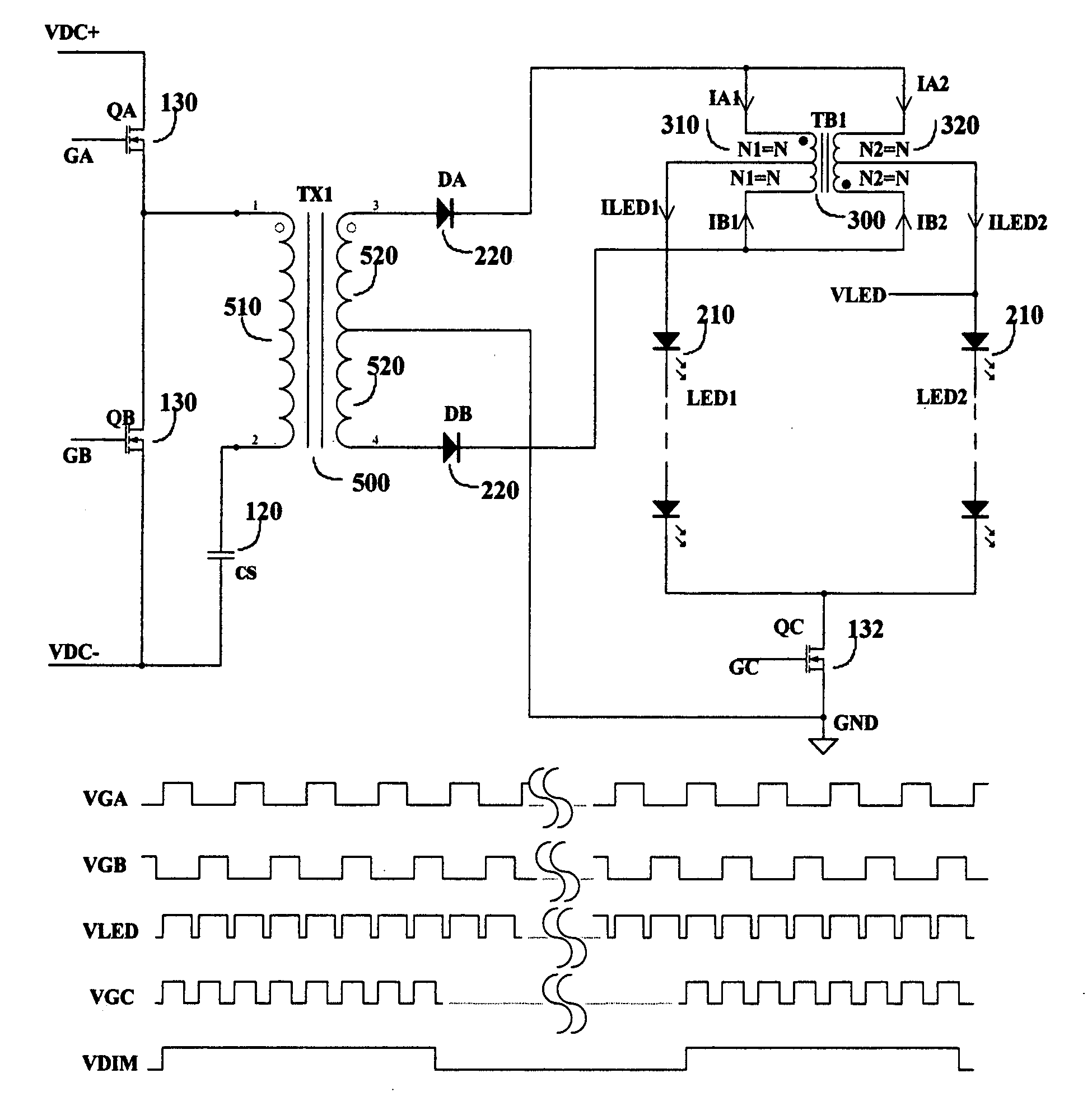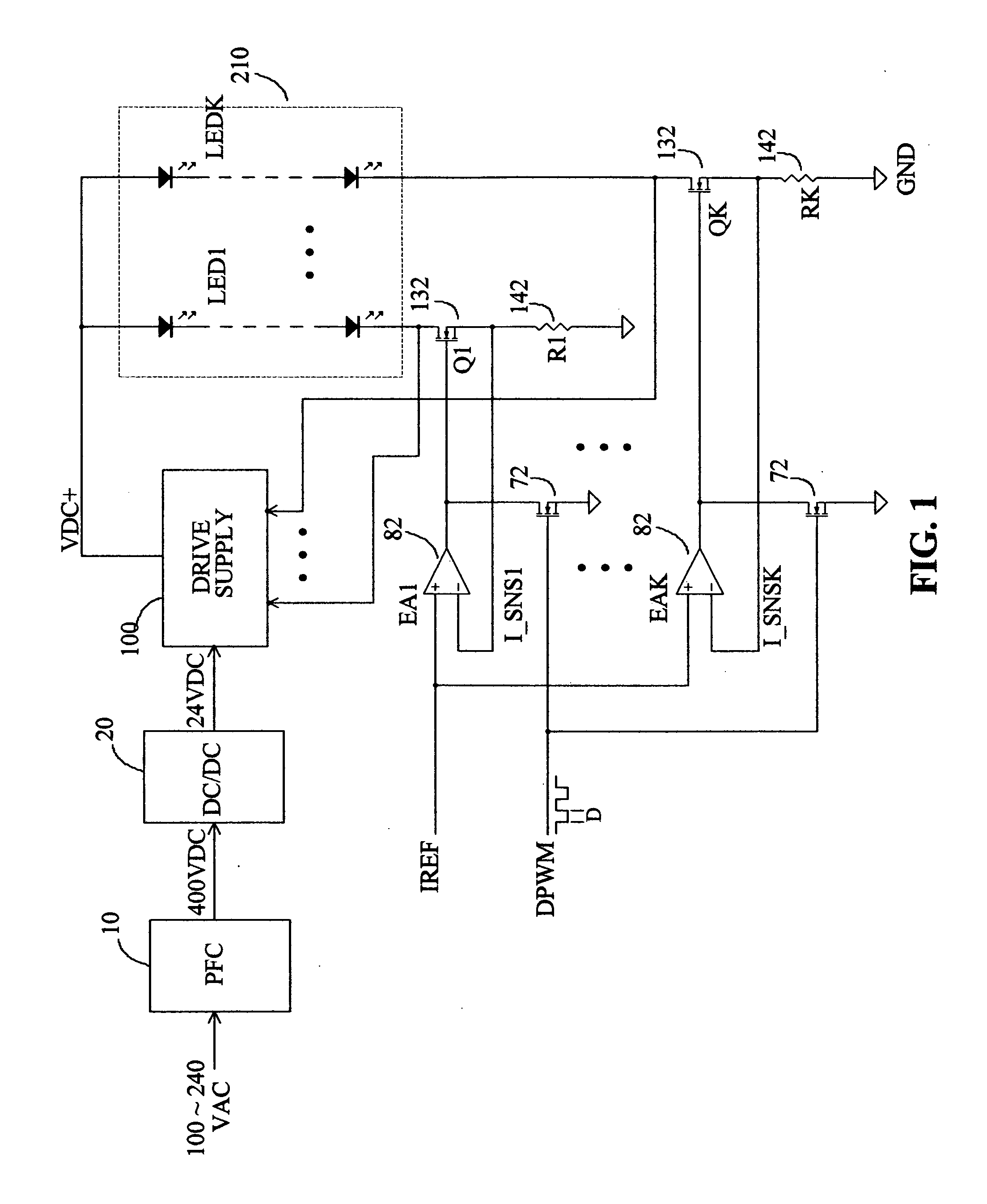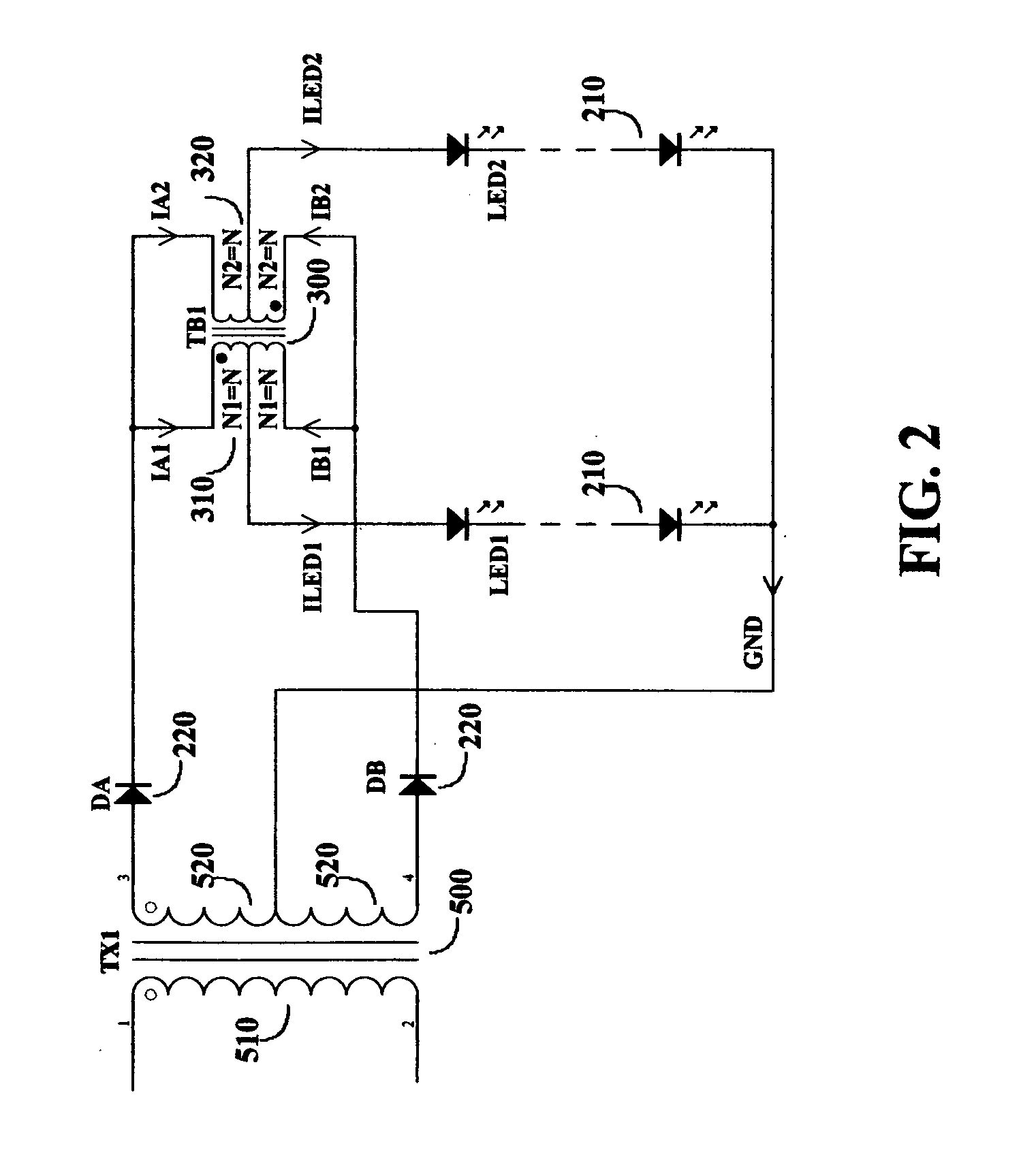High efficiency drive method for driving LED devices
a driving led and high-efficiency technology, applied in the direction of electric variable regulation, process and machine control, instruments, etc., can solve the problems of low power handling capability, steep current-voltage curve in the conduction region, and low relative cost of the device and the drive circuitry, so as to improve the current balancing accuracy
- Summary
- Abstract
- Description
- Claims
- Application Information
AI Technical Summary
Benefits of technology
Problems solved by technology
Method used
Image
Examples
Embodiment Construction
[0026]As described above that the purpose of this invention is to provide an optimum approach to drive multiple LED strings with high efficiency operation and low system cost. Therefore the concept disclosed herein does not use any type of dissipative drive method for the LED control. The first concept is to use center-tapped magnetic components to drive multiple LED strings. FIG. 2 shows an example of such approach. As shown in FIG. 2, a power transformer 500 supplies drive power from its center-tapped secondary winding 520 to the LED strings 210, through the rectifier diode 220 and balancing transformer 300. Balancing transformer 300 has two windings 310 and 320 with equal number of turns and both have a center tap. The two rectifier diodes D1 and D2, represented as 220 are connected between the two supply terminals of the power transformer secondary winding and the receiving terminals of the balancing transformer. The two LED strings LED1 and LED2, represented as 210, are connect...
PUM
 Login to View More
Login to View More Abstract
Description
Claims
Application Information
 Login to View More
Login to View More - R&D
- Intellectual Property
- Life Sciences
- Materials
- Tech Scout
- Unparalleled Data Quality
- Higher Quality Content
- 60% Fewer Hallucinations
Browse by: Latest US Patents, China's latest patents, Technical Efficacy Thesaurus, Application Domain, Technology Topic, Popular Technical Reports.
© 2025 PatSnap. All rights reserved.Legal|Privacy policy|Modern Slavery Act Transparency Statement|Sitemap|About US| Contact US: help@patsnap.com



